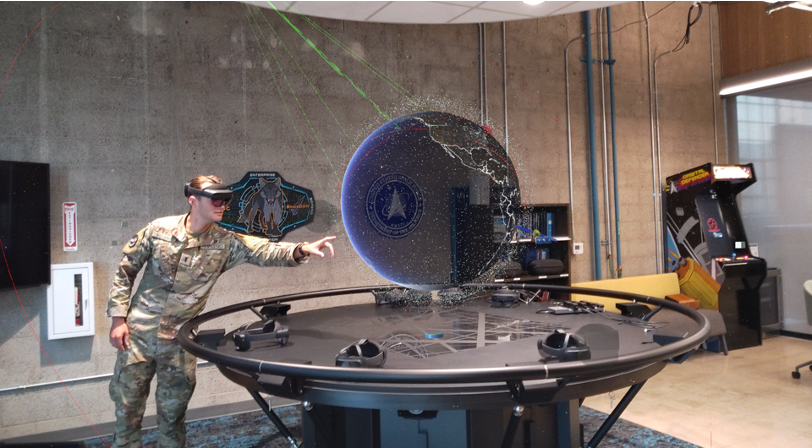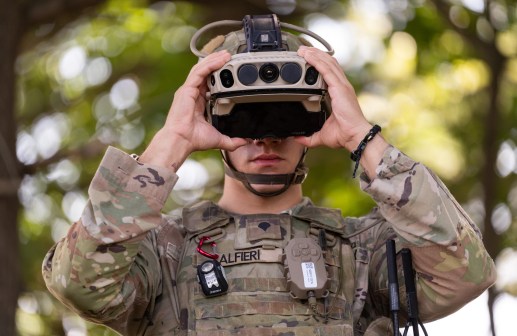Space Force taps Microsoft to build cloud-based, simulated space environment

The Space Force announced Friday that it has given Microsoft a contract to continue work on a simulated environment where guardians can train, test new capabilities and interact with digital copies of objects in orbit.
Under the $19.8 million, one-year contract from Space Systems Command (SSC), Microsoft will develop the Integrated, Immersive, Intelligent Environment (I3E) — an augmented reality space simulation powered by the company’s HoloLens headsets. The training tool is a successor to the service’s Immersive Digital Facility (IDF) prototype developed in 2023, according to a press release.
The contract period began Dec. 1, and the deal includes a reserved scope for an additional three years of work, per the release.
The I3E enables guardians to interact with space-based objects — from satellites to planets in the solar system — in a simulated environment, while also allowing them to digitally integrate emerging capabilities into space architectures in order to better understand how they work in that domain.
The tool currently hosts four missions on Microsoft’s Azure cloud infrastructure: physics-based space environment and satellite simulation; space intelligence collection and scheduling; strategic orbital wargaming; and augmented reality space simulation.
Recognizing that guardians aren’t likely to physically train within the space domain anytime soon, the Space Force has been looking to bolster its modeling-and-simulation technology in order to improve personnel readiness and accurately test new capabilities. Shannon Pallone, program executive officer for battle management command, control and communications (BMC3), noted that the I3E is one investment in the Space Force’s digital environment.
“Leveraging emerging game-changers like I3E enhances our ability to gain situational awareness and enable decision-makers to act at a higher velocity than our adversaries,” Pallone said in a statement.
Although the I3E is currently only available at a location in Los Angeles, the Space Force plans to scale the platform so that guardians can access it from anywhere via a “virtual desktop,” according to the service. In addition, the Space Force is pursuing accreditation so that the I3E can host classified and unclassified data — meaning capability prototypes could more quickly be tested and transitioned into operations.
“Continuing the development and deployment of the I3E is going to pay huge dividends for our Guardians,” Col. Richard Kniseley, senior materiel leader for the Commercial Space Office at SSC, said in a statement. “Linking numerous sites together through the robust digital ecosystem provides an unrivaled experience to better understand the space domain.”






